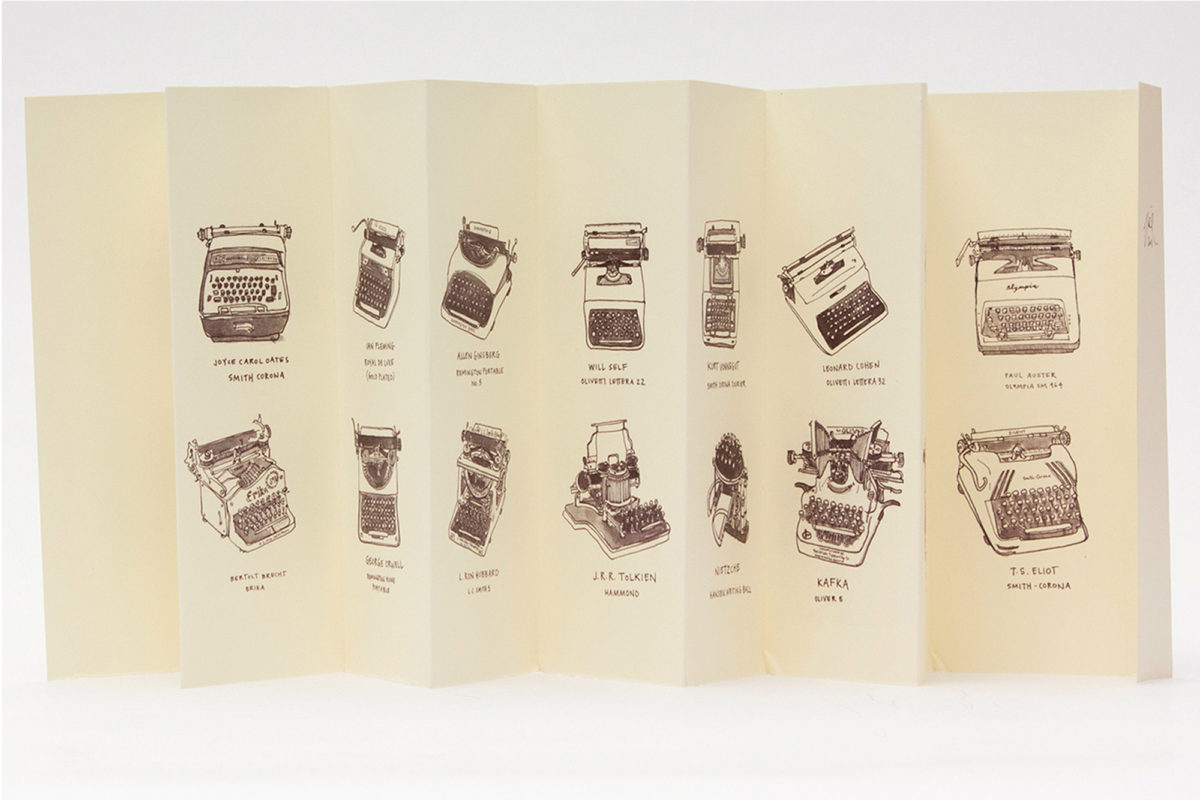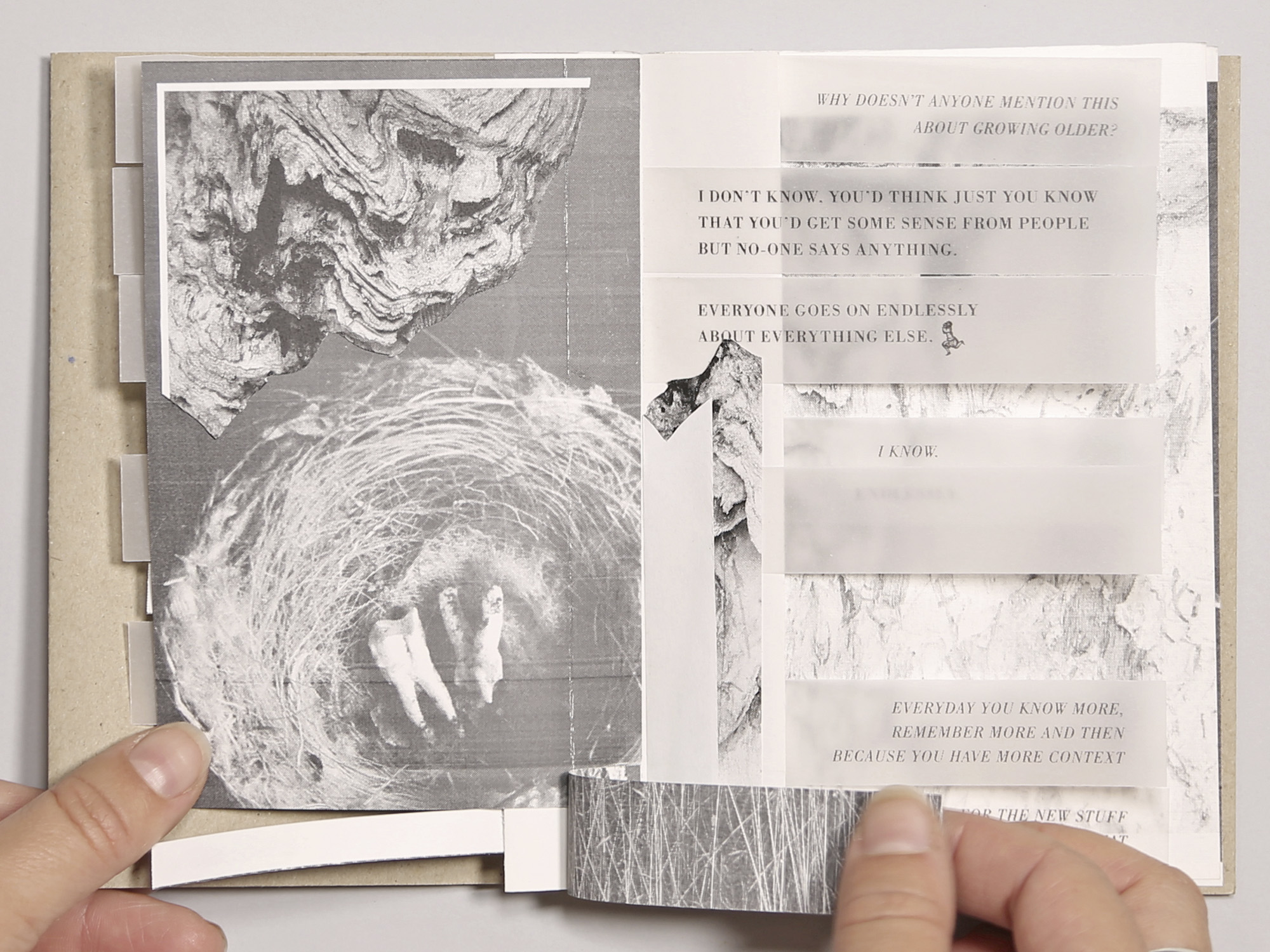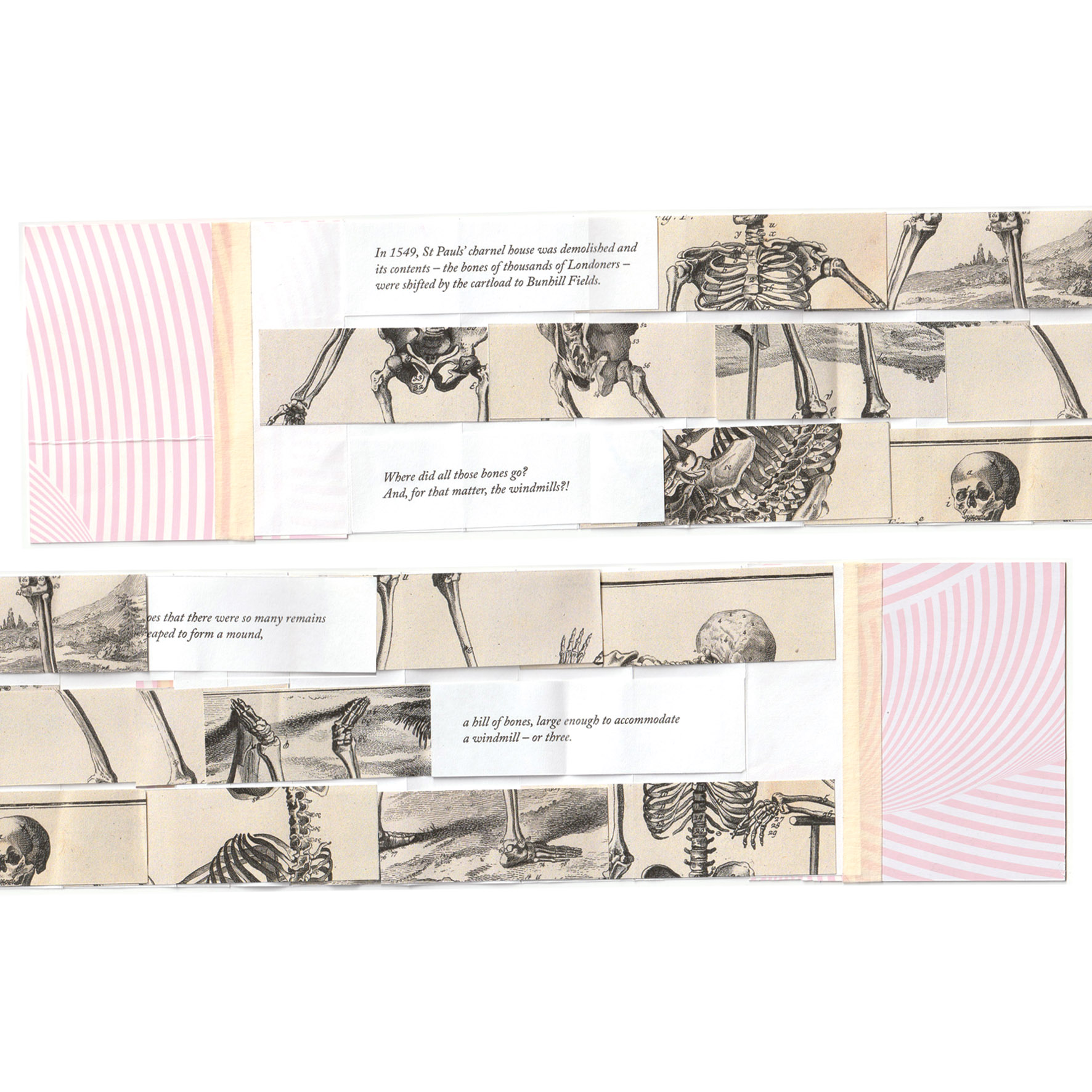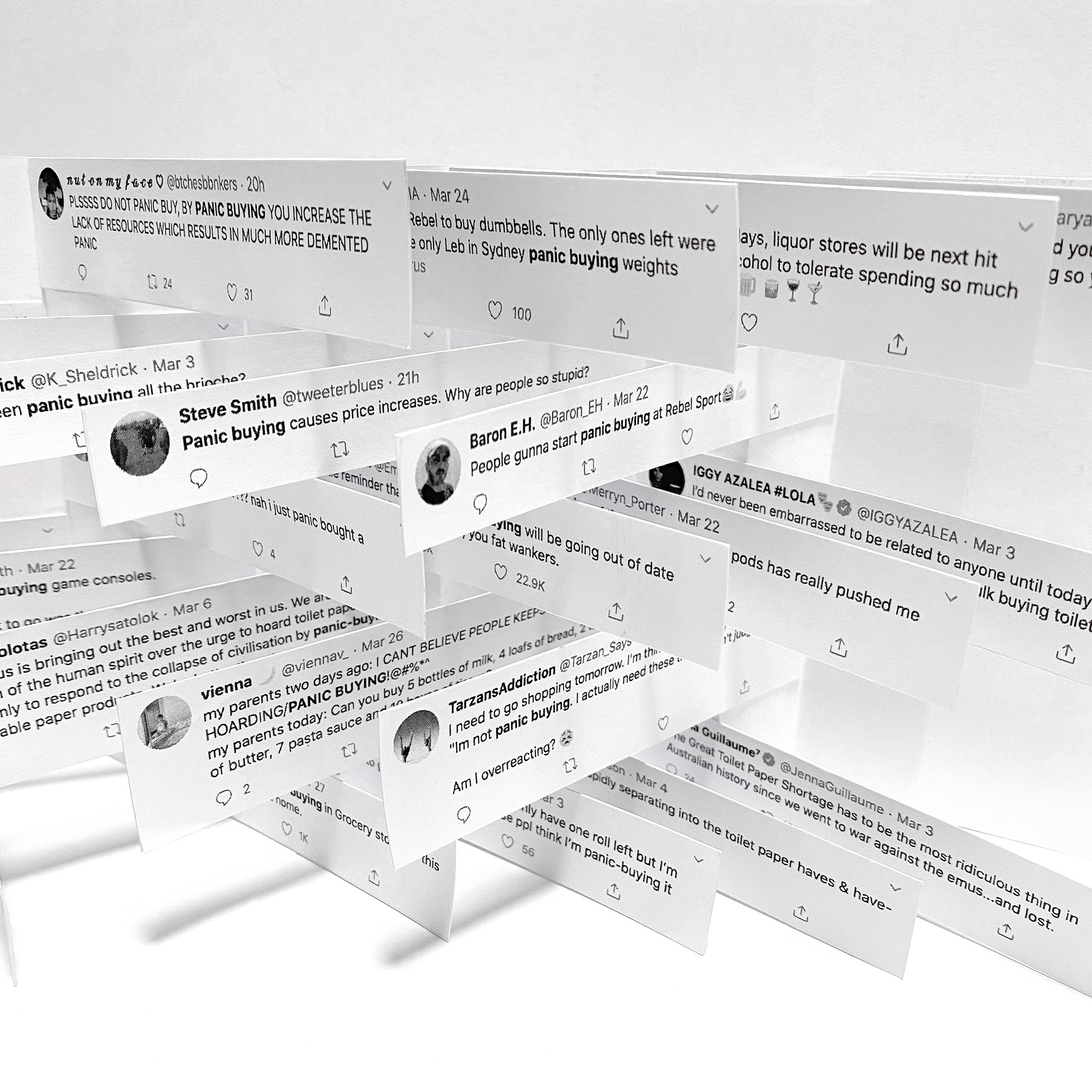Experimental book making briefs
In 2020, I wrote these book making briefs as ‘structured play’ for my honours students to help them think through making, and also shared them through the Australian Book Designers Association instagram site as a design version of ‘guided meditations’ during the loneliest (for many) phase of pandemic lockdown. It’s important to note that you don’t have to make finished things – these experiments could be pencil sketches, rough prototypes or drafts. The point is the pleasure of the process, perhaps finding comfort in the zone of focussed making, or even to surprise yourself with inspiration for another project. A lecture (audio over slides) on the Future of Publishing gives context for the experimental book briefs, divided into Part 1 and Part 2 for easier viewing.
Brief 1: Concertina/Accordion Fold Book
A concertina book can be held and read as double page spreads, or unfolded as a long panel (see Anne Carson’s Nox, below). How might a narrative or argument play out over a set of spreads, but also a long panel? Think of illustrated screens and concertina books in East Asian art, or the fold-in back covers of Mad magazine. Could you: Cut peep-holes to reveal hidden content (on the reverse, or from one panel to another), or to create shadows? Cut a skyline or landscape – real or imagined? Create a wordless narrative sequence? Use only type-as-image? Collage, overprint or mix media?

Additional resources:
The University of Portsmouth has a great series of book making resources, including a tutorial for a more complicated concertina with hardcovers and a belly band.
Concertina examples:
1. Anne Carson’s Nox is an ‘epitaph’ to her estranged brother, after his death, presented as a concertina in a box. It can be read like a book, or unfolded to a mind blowingly long scroll (students often gasp when I show it) assembled from fragments of letters, notebooks, poems and photographs. Reviews from Frieze and a video of someone encountering it.
2. Ed Ruscha’s Every Building on Sunset Strip (view with audio off, scrub through to end). Look at Ruscha’s collection of artist books and editions – he’s a pioneer in the field. There are hundreds of ‘homage’ books created in Rushca’s style, including:
(image: img_6849.jpg)
(image: img_6844.jpg)
3. In China, Japan and other Asian countries, painted screens (byobu)and accordion books (orihon) have existed for centuries, often visually interpreting cultural narratives and poetry (ekphrasis). Contemporary versions often include multiple languages. Can a book have cultural meanings that vary depending on the place it’s made, or material used? When we borrow a binding or image making process from another culture, what kinds of meaning are embedded within it?
4. An ancient spell book in concertina form that would be draped over the bodies of participants in a ceremony. How could you design a book that is worn or performed?
5. MAD magazine artist Al Jaffee discusses the history of the fold-in back cover, and his design process.
Some of my concertina experiments:






Brief 2: Book Mapping
‘Visually catalogue’ every book in your house/living space (map, schema, diagram, visual list), in order to understand your current relationships to book objects. You could take an abstract approach, such as making a rough floor plan and marking areas with/without books, or a detailed approach, such as compiling a list of every book or sketching every cover. Then, analyse your ‘data’ – which books are in which rooms/spaces, is there an organising principle followed throughout, or do different people organise in different ways? What kinds of books do you own, where do you keep them, and what does all this say about you as a person? Do you have ebooks, audio books or other digital forms?
See also:
—The Underground New York Public Library an ongoing photographic essay, documenting people reading books on the NYC underground with links to borrow or buy the books they are reading.
— Plath’s Bell Jar covers, categorised from most to least sexist — think about categorising your books in unexpected ways.
Brief 3: What is a book?

Explore the deceptively simple question ‘what is a book?’ by making something that may or may not be a book.
If we define a book as a codex – a stack of leaves (pages) bound along one edge – could a plant be a book? When does a stack of pages become a book? Must a book have pages? A cover? Must it be bound? Must it contain words and pictures? If there were no words or pictures, what would we ‘read’? Can a book be an idea – think of artworks called ‘the book of xxx’ or ‘the xxx book’ which aren’t actually books. Could you have a book of smells? Or flavours? Could you perform a book instead of making it?
How do the material elements of a book such as paper stock, size and weight of the object affect us? Can I say I’ve read a book if I listen to the audiobook? If we buy exactly the same edition of a book, what makes my copy different to yours? Or, what traces of ourselves do we leave on books?


‘Living Traces’, Megan Wong cultivated microorganisms swabbed off library books (book culture!) and created a visualisation of the Dewey Decimal System based on bacteria left by the traces of past borrowers.
See also:
— Bruno Munari’s ‘Libri Illeggibili / unreadable books’ (great critique of them here)
— Sol Le Witt’s ‘Grids’ (a designer would be able to ‘read’ this).
— In addition to pins on the Past and Future Books Pinterest board, I have two other boards which may be of interest: artist books and book sculptures.
Two of my articles might also be of interest:
What is a book in the digital age?
On reading with our hands
Brief 4: Flag book
A flag book is an extension of the concertina/accordion book (see Brief 1) – with strips of paper (or other material) attached. Could you present a conversation, an argument, a comparative text analysis? The ‘flags’ have a front and back – could you slowly reveal an image, a counter argument, or a secret on the back of the flags? Cut photographs or other images into each other in surprising ways? The flags don’t need to be neat rectangles – play by varying shape and length. Use whatever paper stock you have on hand, supplement with cut up magazines, paper towels, leaves, receipts (do your tax return first), or anything else you could stick onto the folds.
Examples:

‘A Fog Warning’, Zoe Sadokierski. A quasi-fictional conversation, written by Chris Caines.

‘Unconscious racism’, Hannah Seeto. A collaborative flag book about unconscious racism towards Asian Australians, with responses from family, friends and university peers (handwritten flags) to a series of common unconsciously racist comments (typeset flags) directed at Asian people. The flag book emphasises the weight and accumulation of these belittling comments.

“Hill of Bones’ Grace Felstead combines text from ‘The Bodies At Bunhill’ by Mike Biles with skeletal illustrations by Andreas Vesalius,1543, sourced from The Wellcome Collection was an early visual experiment exploring the lack of recorded history of women buried at Bunhill Fields Burial Ground in London. Created quickly, in studio.

‘Twitter Panic Buying’ by Aaron Davis collates reactions of Twitter users to the supermarket panic buying frenzy of early COVID-19.
Instructions:
— Instructions via University of Portsmouth tutorials.
— A link from Book Arts Web to a journal with detailed instructions.
— A much simpler version (which doesn’t close as well).
See also:
A collection of examples, using both text and images.
